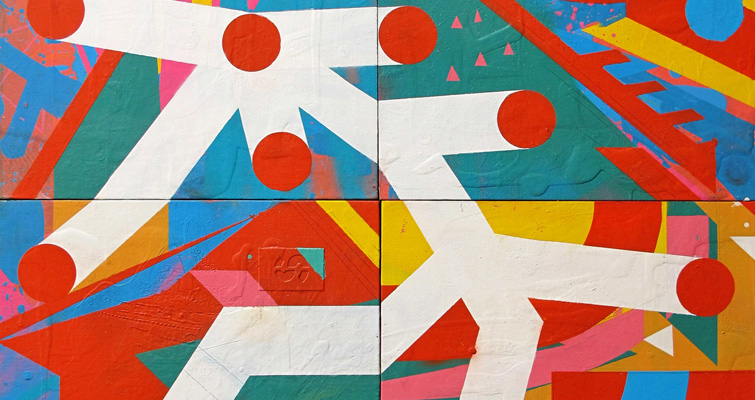International artists redesign maps for “Mapping the City” exhibit
What happens when you ask street and graffiti artists to map a city they know intimately through their previous creative endeavors?
That’s the question that drove the curators behind Mapping the City, an art exhibit at Somerset House, in London, through February 15. And the answers, as one might guess, are far from conventional. The 50 international artists represented took their ideas to new creative levels, striking one common chord: You’d be hard-pressed to find your way around a city by following their designs.

Chu, Julian Pablo Manzelli, Bueonos Aires, 2012 via Somerset House
Take, for example, the works reviewed in this recent article. There’s a map of the city of Rennes, by French group Les Freres Ripoulain, which shows only vacant sites available for street art. There’s a colorful, abstract map of Barcelona, by Spanish artist Sixe Paredes, replete with indecipherable code. There’s an even more out-there “map” that’s not a painting or drawing at all; instead it’s sheaths of latex cast and peeled from sites around Paris.
Now how is anyone to follow that in a quest for directions to the Louvre?
Mapping the City is about art, of course, adopting form over function. But perhaps unintentionally, it can also bring up reflections on the purpose and practicality of more traditional maps, signs, and symbols.
It seems safe to assume, for example, that traditional maps, signs and symbols are meant to express clear and obvious messages to a mass audience. So how well do they do their jobs?
We’ve all come across road signs that convey more confusion than meaning. And every once in a while, a new symbol pops up in familiar territory, causing confusion before its widespread adoption. Take, for instance, the media control symbols that are now so ubiquitous. Arrows forward and back are intuitive symbols for fast forward and rewind. There was a time, however, when people stared wonderingly at the two parallel lines meaning “pause,” and instead of pressing the sideways triangle for play, they searched in vain for a button with the word “on” printed on it, because that “on” button used to be there.
Sometimes it takes a while for new signs and symbols to catch on. Once they do, we can hardly remember when they weren’t a part of our everyday existence.
Which may make you wonder: Will we one day read those sheaths of latex to find our way around after all?










